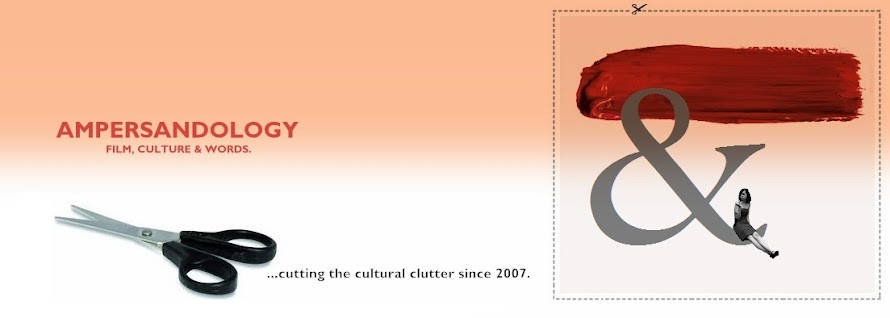by Jillian Butler, Ampersandology
Look, I know. But I can’t help but name it—I got a thing for
the chorus girl.
It keeps popping up in my fiction, a stutter of a motif. It’s my own regrettable nostalgia, mostly wrapped up in what it
conveyed rather than what it really was—the yesteryears of the enigmatic dancing girl, guileless in her power
over men and brightly smiling under the stage lights. But it was never true, really. It's a hyperreal performance of womanhood, never the real thing.
Have you seen these creatures? They’re unreal. Smiles glued to their lips, pushing their uniform bodies through space. They're girlish little women, or else womanly girls. Do they have an inner life, their own agency? You'd never guess.
Their kind echo throughout history—the swaying hips of the burlesque, the eternal girlchild of Victorian soap ads, the dazzling performance of femaleness of the Hollywood chorus girl. Eternally young and appropriately blank.
Their kind echo throughout history—the swaying hips of the burlesque, the eternal girlchild of Victorian soap ads, the dazzling performance of femaleness of the Hollywood chorus girl. Eternally young and appropriately blank.
But dancing girls exist only as a collective noun: who
ever talks about one dancing girl? They only exist together; when dispersed,
the effect evaporates. And so they travel in packs, trapped in the forgiving
limitations of the evening show. Rather than stand alone, the dancing girls are
the seams in the self-contained logic of their musical numbers.
 |
| From LIFE magazine, 1958. |
Dispel your misplaced notion that these women a) really want
to be up there on stage and b) are just delighted to be dancing for you—yes, you!—as they kick, twirl, gesture and
hoof in perfect uniformity, trained within an inch of their life to follow the
next. Dancing until they die--or turn 35, whatever happens first.
*
Busby Berkeley’s girls, meanwhile, didn’t even need that
much: “I never cared whether a girl knew her right foot from her left,” he once
said, “so long as she was beautiful.”
 |
| Footlight Parade, 1933 |
Berkeley, a man made famous by his unmistakable configurations
of the female form in abstract space, was alarmingly unsentimental when faced
with the legions of pretty girls that built his legacy. He’s not the first,
either: look to the 1884 Electric Girl Company, a business model that supplied
young girls whose bodies were outfitted in electric lights and ornaments. They
were used for parties or as waitresses for the crop of modernity-obsessed restaurants,
the perfect melding of technology and the human (female) body.
Then followed the usual suspects: the Rockettes, in the
1920s; Earl Carroll’s vaudeville revue “Vanities”; circus peep shows; burlesque
shows that slowly showed more and more skin.
There is something beyond surreal in these chorus lines—the faces
of these pretty young women, rather than approach uniformity, disturb me in the
ways they are dissimilar; in other words, I am perturbed by the idea that I’m
supposed to blend them all together and marvel at their sameness, as if someone in the costuming department
expected the matching wigs and thematic outfits would erase anything unique or
special about everything contained therein.
Earl Carroll was the creator of vaudeville’s “Vanities”, a precursor
to the Berkeley chorus girl by more than a few years, had his own philosophy on
the Platonic nature of these chorus lines:
“The following points of beauty are given careful consideration: color and texture of hair, brilliancy and size of eyes, regularity of teeth, general coloring, texture of skin, formation of hands and feet, posture and personality...”
But not even these high standards could always be met, as Carroll
went on to note:
“There are times (and this was particularly true during the war) when it was necessary to engage girls who do not have all the necessary qualifications. We replace them when it is possible.”
There exists, if you’re curious, a record of the
measurements of the “ideal chorine.” Gals, break out your measuring tapes—or, you
know, roll your eyes. So the ideal chorus girl has:
-a six-inch wrist
-a twelve inch neck
-a nineteen and a half thigh
-a nine inch ankle.
Not to mention the highest standard of personal grooming. Rather than be repulsed at the blatant sexism on display
here, I'm kind of charmed. I mean, they must have had their reasons, right? You can't blame anyone for having standards, even if those standards codify the female form into the gender expectations of an ice cube tray.
Oh, wait. Never mind. I just remembered Berkeley’s stated goal
when casting new chorus girls: his hope was that all the girls would be of
uniform size, talent and comeliness—“just like pearls.”
Have a suggestion for a future Ampersandology topic? Got something
you’d like to say? All feedback welcome! Shoot us an email at ampersandology@gmail.com, or follow Ampersandology on Facebook.



No comments:
Post a Comment